- The Crucial Link Between Children and the Natural World
- Growing with Nature: Cultivating Child Well-being and Bond with Nature
- Central Capabilities for a Flourishing Life: Nature’s Influence
- Guiding Principles for Nature Therapy Activities for Children and Families
- Tips for Incorporating Nature into Children’s Lives
- Additional resources
Have you ever wondered how the world your children are growing up in compares to the one you knew as a child? According to The World Health Organization (WHO), today’s children are navigating a landscape vastly different from previous generations, facing new health threats that challenge their well-being and development. From the existential threats of climate change with its rising sea levels and extreme weather events to the insidious rise in childhood obesity, which has seen a staggering increase from 11 million affected children and adolescents in 1975 to 124 million in 2016. These issues are compounded by the pervasive effects of pollution, harmful commercial marketing, unhealthy lifestyles and diets, injury and violence, conflict, migration, and inequality.
In particular, climate change is a formidable threat, impacting not just the environment but the very essence of children’s current lives and their future existence. Additionally, the rapid escalation of childhood obesity poses a significant challenge to global health, indicating a broader crisis in children’s physical well-being. Beyond physical health, the WHO emphasizes the profound influence of the environment on the mental and emotional development of children. Negative experiences, such as exposure to violence, bullying, and poverty, significantly increase the risk of developing mental illnesses like depression, anxiety, and behavioral disorders. Alarmingly, 10% of children and adolescents globally experience a mental disorder, with the vast majority not receiving the care they need. This dire situation has been exacerbated by the COVID-19 pandemic, which has led to a 25% increase in the prevalence of anxiety and depression worldwide, highlighting the acute need for accessible mental health services.
In the face of these daunting challenges, could reconnecting with nature offer a beacon of hope for our children? This blog post explores how the principles of ecotherapy and ecopsychology could provide a respite from the threats posed by our changing world and harness the healing power of the natural environment to nurture children’s physical, emotional, and mental health.
The Crucial Link Between Children and the Natural World
In the past, the daily lives of children were deeply intertwined with the natural world. Just a century or two ago, their routines were profoundly influenced by nature’s rhythms. Activities such as outdoor play, farming, helping parents in the fields, caring for animals, and exploring the wilderness were commonplace for many children – excluding, perhaps, those from the privileged aristocratic class. While these engagements were often born out of necessity, with children having to work and assist their parents, they also facilitated a direct connection with nature. Despite the demands of their daily tasks, unstructured play in natural settings, when it occurred, offered children invaluable learning experiences. Through hands-on interaction with the elements around them, children had the opportunity to develop not only physical skills but also emotional regulation and social abilities. This balance between work and spontaneous play in nature provided a unique blend of learning and development opportunities.
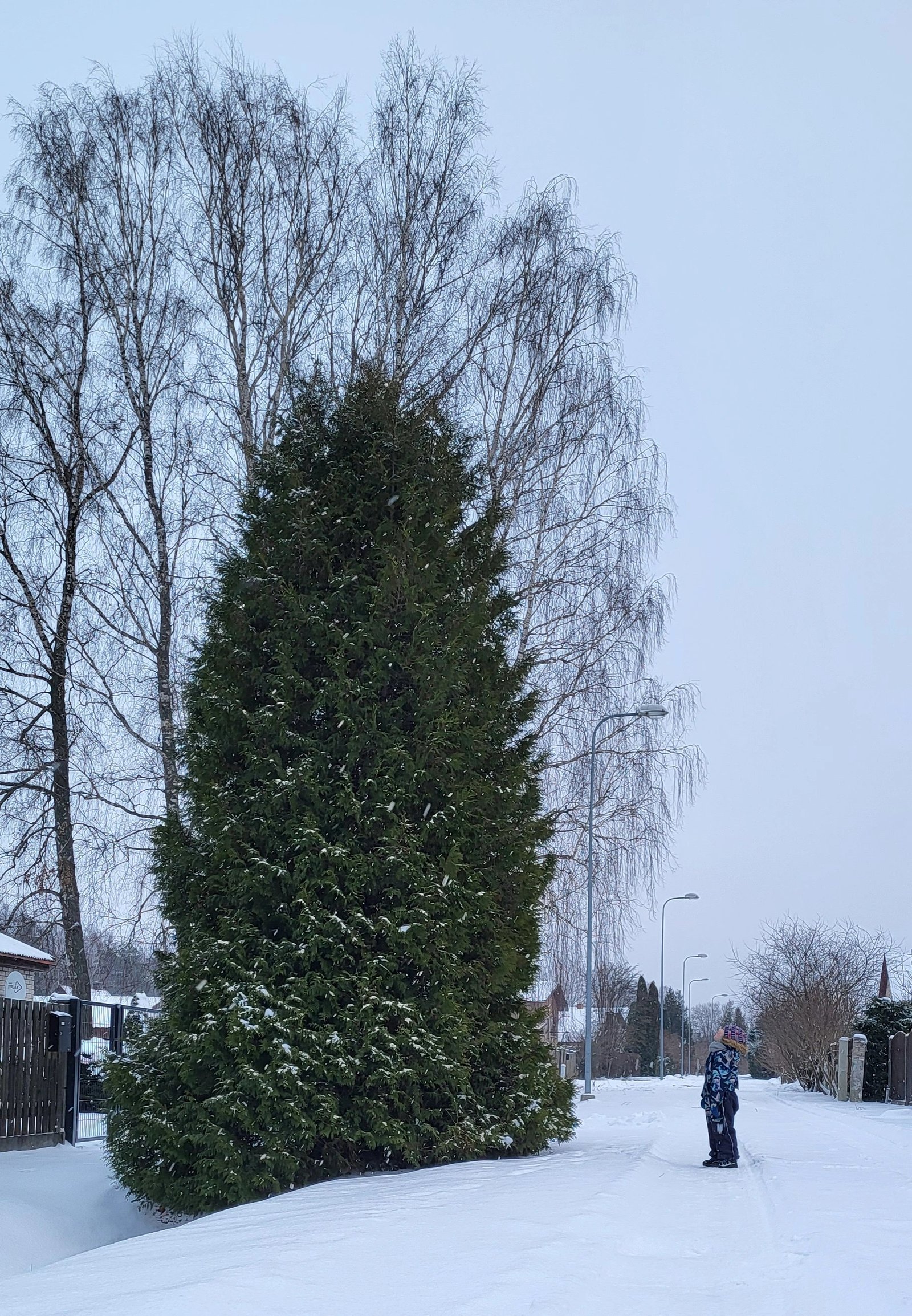
However, the modern lifestyle has introduced challenges to maintaining this vital connection. The biophilia hypothesis, a concept suggesting humans harbor an innate affinity for the natural world, sheds light on this issue. Initially introduced by Erich Fromm, a German-born American psychoanalyst, in his 1973 work “The Anatomy of Human Destructiveness,” biophilia is described as the “passionate love of life and all that is alive.” Fromm posited that this inherent characteristic propels us to seek meaningful relationships with nature. Building on Fromm’s foundation, American biologist Edward O. Wilson further developed the biophilia hypothesis in his 1984 book, “Biophilia.” Wilson argued that our tendency to connect with nature and other living beings is not merely a preference but a genetic predisposition crucial for our mental and physical well-being. This theory has resonated across various disciplines, including environmental psychology and landscape architecture, influencing design choices aimed at enhancing human health by fostering connections with the natural world.
The importance of connecting with and caring for nature is increasingly recognized amidst today’s lifestyle challenges. Richard Louv’s groundbreaking 2005 book, “Last Child in the Woods,” brought attention to the phenomenon of Nature Deficit Disorder. This concept, though not a clinical diagnosis, sheds light on the array of behavioral problems children face due to reduced outdoor activities. Louv’s analysis reveals how a life detached from nature can lead to attention difficulties, obesity, underdeveloped sensory skills, and a limited understanding of the natural world. He argues that the lack of nature in children’s lives can negatively impact their health, creativity, and relationship with the environment, advocating for a reintegration of nature-based experiences to mitigate the effects of a digitized and indoor-centric lifestyle.
Nature Deficit is increasingly associated with various psychological and physical health challenges. Despite significant efforts towards promoting healthier lifestyles, childhood obesity rates remain disturbingly high, having surged in recent decades. A mix of sedentary habits, social isolation, bullying, and drug access contributes to a cycle of illness and depression for too many youths. This problem is exacerbated by the prevalence of latch-key children and teens who suffer from the isolating effects of excessive technology use. Ironically, the anxiety and isolation many children and teens face are partly due to overprotective parenting measures, though well-intentioned. Concurrently, scientific research supporting the benefits of nature experiences – and outlining the detrimental effects of nature deficit – continues to expand, underscoring the vital need to weave the natural world back into our everyday lives.
Growing with Nature: Cultivating Child Well-being and Bond with Nature
Research consensus is unequivocal: the bond between children and nature profoundly shapes their growth. This connection transcends mere physical activity and mental health benefits; it bolsters educational outcomes, encourages positive environmental behaviors, and is pivotal for social-emotional learning (SEL). Beyond these aspects, it is foundational to learning and personal development, contributing to the full spectrum of essential capabilities needed for a flourishing life. This summary distills key findings from various studies, spotlighting nature’s irreplaceable contribution to the comprehensive development of children.
Physical activity
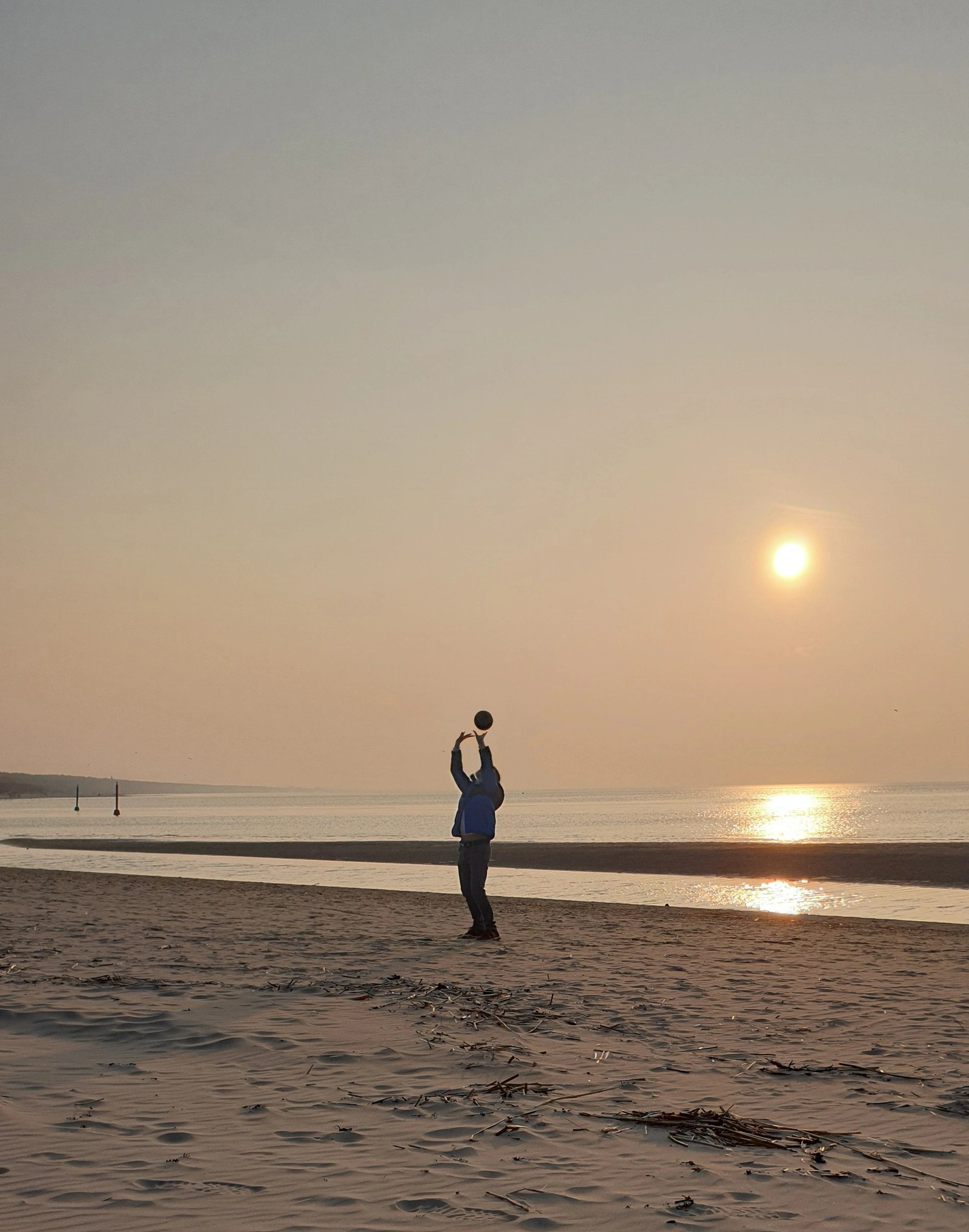
One of the most immediate and observable benefits of children’s connection to nature is its significant impact on physical activity. Natural environments inherently invite active play, exploration, and physical engagement. This interaction is not only enjoyable but also crucial for children’s physical health and development. Outdoor activities such as running, climbing, and playing in natural settings provide essential exercise that is key to combating the modern challenge of sedentary lifestyles and promoting healthy growth, vital for combating obesity and encouraging physical development.
The dynamic and varied landscapes offered by natural settings challenge children physically in ways that indoor environments and structured playgrounds often cannot. This encourages the development of motor skills, physical endurance, and overall fitness. Moreover, the appeal of nature – its unpredictability, vastness, and the sense of adventure it instills – motivates children to be more active and spend more time engaging in physical play. Incorporating regular outdoor activities into children’s routines not only promotes healthier lifestyles but also establishes a foundation for lifelong habits of physical activity. The benefits of this connection to nature extend beyond immediate physical health, influencing children’s attitudes towards exercise and outdoor pursuits as they grow.
Mental health
The relationship between access to green spaces and children’s mental health is a well-documented phenomenon in contemporary research. The evidence provided in studies, including the significant findings from the CANDLE study in Shelby County, Tennessee, underscores the critical role that green spaces play in reducing symptoms of anxiety and depression among children. This research aligns with a broader consensus in the field that access to nature is not just beneficial but essential for promoting emotional well-being and mental health in children.
Green spaces offer a refuge from urban stressors, providing a serene environment that encourages relaxation and mindfulness. The natural world’s inherent tranquility has a calming effect on children, helping to alleviate stress and reduce the prevalence of anxiety and depression symptoms. This connection to nature facilitates emotional regulation and resilience, offering children tools to cope with life’s challenges more effectively.
Furthermore, engagement with nature has been shown to enhance mood and overall emotional state, contributing to a more positive outlook on life. The therapeutic qualities of natural environments – such as the soothing sounds of wildlife, the calming presence of trees and water, and the overall aesthetic beauty – play a significant role in this process.
Integrating regular access to green spaces into children’s lives is thus a fundamental strategy for supporting their mental health. This approach not only addresses immediate psychological needs but also lays the groundwork for long-term emotional well-being, fostering environments where children can thrive emotionally and mentally.
Educational attainment
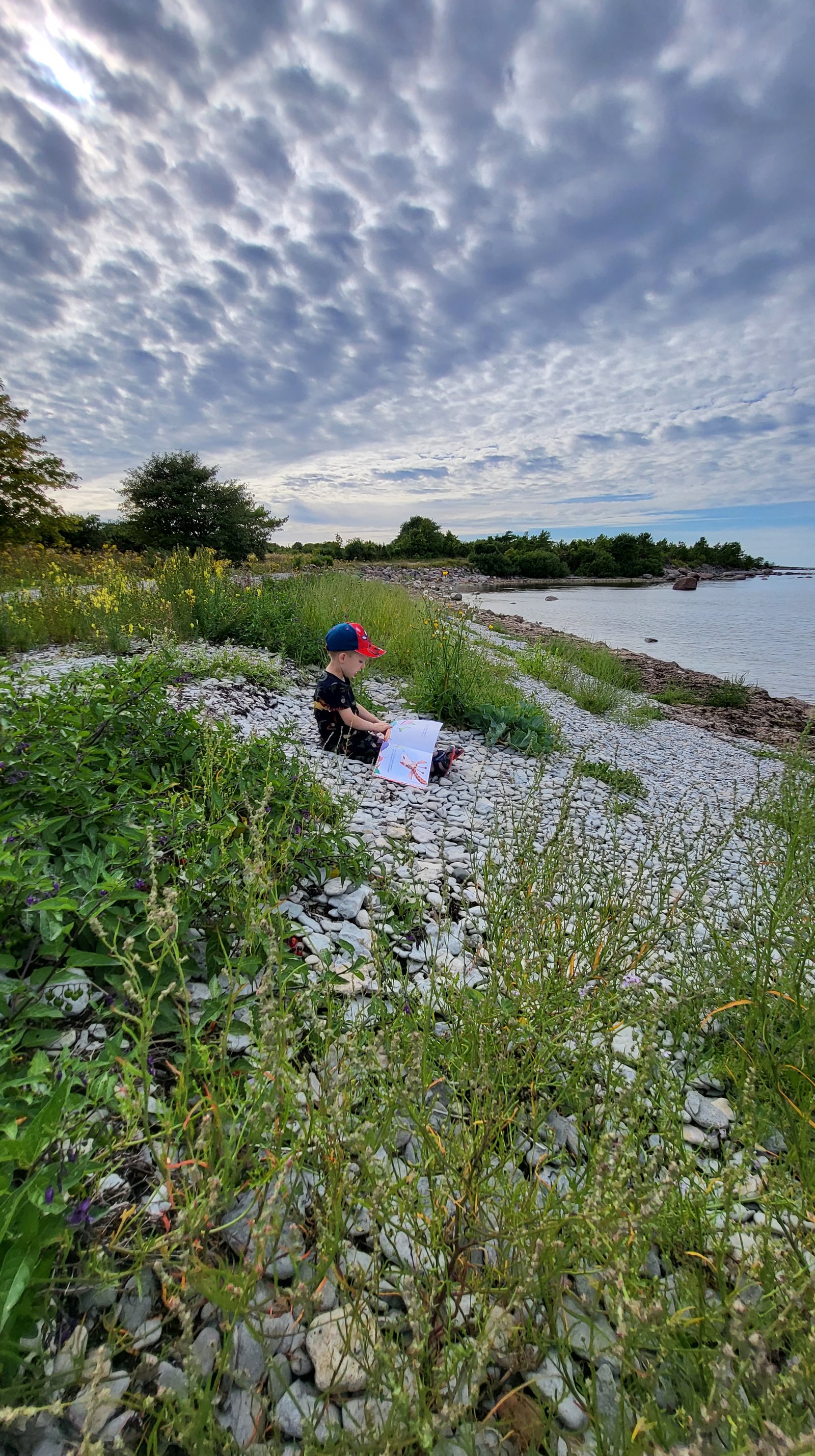
Nature-based learning environments have been increasingly recognized for their positive impact on educational outcomes. Research highlights how access to natural settings can significantly enhance children’s focus, creativity, and overall academic performance. This connection is grounded in the understanding that nature stimulates learning in ways traditional classroom settings may not always achieve.
Natural environments provide a rich sensory experience that can ignite children’s curiosity and inspire creative thinking. The diverse stimuli found in outdoor settings encourage students to explore and inquire, leading to deeper engagement with educational content. Moreover, the calming effect of nature helps reduce stress levels, which can improve concentration and attention, enabling children to absorb and retain information more effectively.
Studies, including those examining nature-based instruction and outdoor education programs, consistently report improvements in various academic domains. Children learning in these enriched environments often show higher scores on standardized tests, enhanced problem-solving skills, and increased motivation to learn. The hands-on, experiential learning opportunities provided by nature also support the development of critical thinking and observational skills, valuable across all academic disciplines.
Furthermore, the inclusion of nature in education fosters an appreciation for the environment, embedding lessons of environmental stewardship alongside traditional academic learning. This holistic approach not only elevates educational attainment but also cultivates a generation of learners who are environmentally conscious and equipped to tackle the challenges of the future.
By integrating natural elements into the educational process, schools can offer more dynamic, engaging, and effective learning experiences. The evidence supporting nature-based learning environments underscores the need for educational policies and practices that embrace outdoor learning as a vital component of children’s academic and personal development.
Environmental behaviors
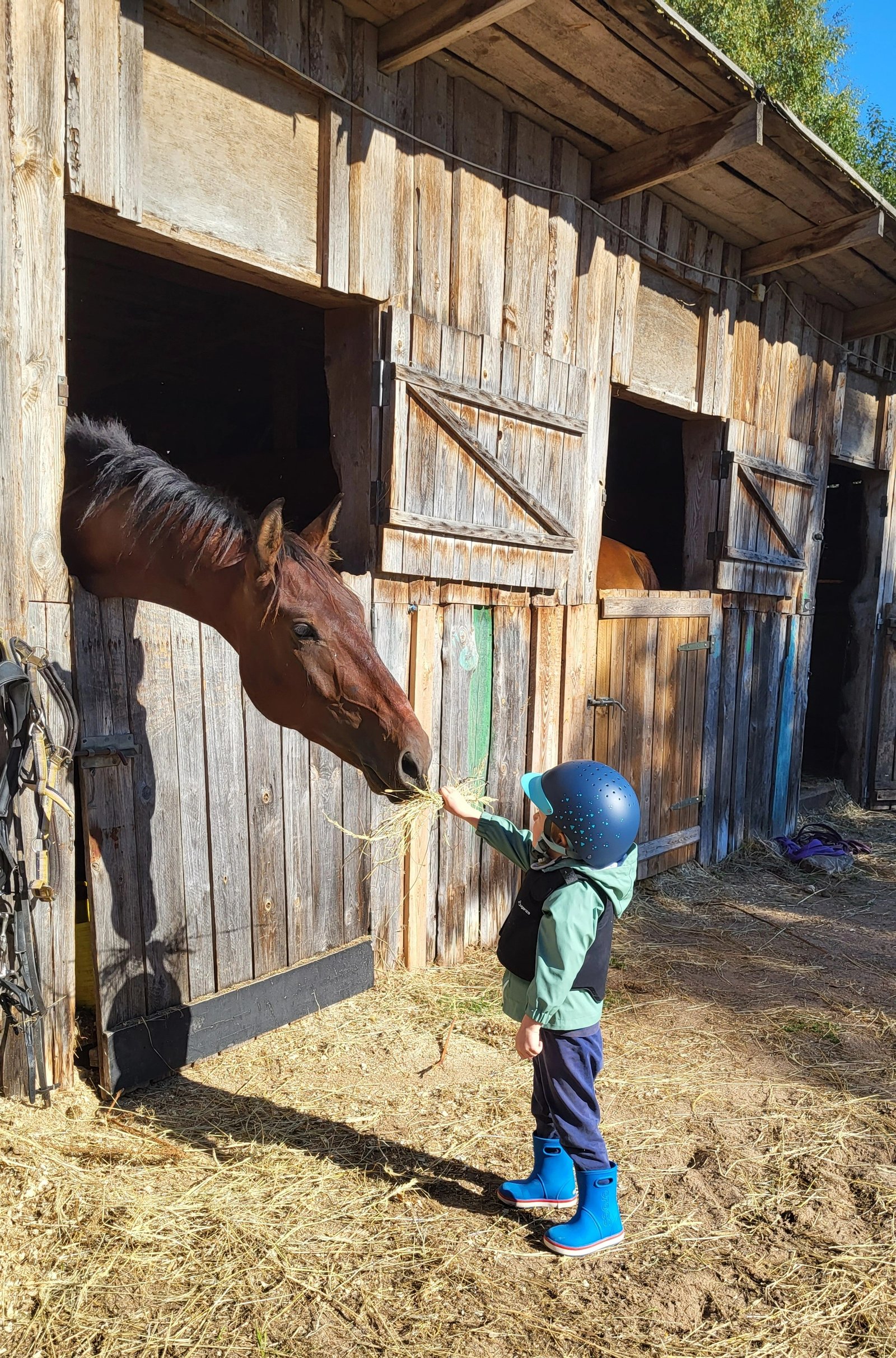
Early experiences with nature play a pivotal role in shaping children’s attitudes and behaviors toward the environment. These initial interactions with the natural world are crucial in fostering a sense of responsibility and care for the planet, leading to a lifelong commitment to environmental stewardship and sustainability.
Children who are regularly exposed to outdoor environments tend to develop a deeper understanding and appreciation for the complexity and beauty of the natural world. This connection is instrumental in cultivating pro-environmental behaviors, as children learn to value and protect natural resources from a young age. Activities such as planting trees, conserving water, recycling, and participating in clean-up efforts become ingrained habits, reflecting their respect and concern for the environment.
Moreover, nature-based education further reinforces these behaviors by integrating environmental themes into learning, encouraging children to think critically about their impact on the planet. Through hands-on experiences, children witness firsthand the consequences of environmental degradation and the importance of conservation efforts, which enhances their commitment to sustainable practices.
Instilling a strong environmental ethic in children not only benefits the individual and their community but also contributes to global efforts to address environmental challenges. By nurturing environmentally responsible behaviors from a young age, we are preparing a generation that is equipped to deal with the complexities of environmental stewardship and committed to making positive changes for a sustainable future.
Social-emotional learning (SEL)
Outdoor activities play a crucial role in enhancing social-emotional learning (SEL) skills, which are foundational for children’s emotional and social competencies. Nature serves as a dynamic classroom that teaches valuable lessons on empathy, cooperation, and resilience, among other SEL skills. Through interactions with the natural world and outdoor play, children learn to navigate social relationships, manage their emotions, and develop a sense of self-awareness and responsibility.
Nature’s inherent challenges and opportunities for exploration foster problem-solving skills and adaptability. For instance, navigating a trail or coordinating a group activity in a park requires teamwork, communication, and leadership – all essential components of SEL. Additionally, the unpredictability and openness of natural settings encourage children to make decisions, take risks within a safe context, and learn from their experiences, enhancing their self-confidence and autonomy.
The calming effect of green spaces also supports SEL by providing a peaceful environment for children to reflect, regulate their emotions, and practice mindfulness. This connection with nature helps reduce stress and anxiety, contributing to better emotional regulation and a greater capacity for empathy and compassion.
Moreover, outdoor activities often involve shared experiences and challenges that build a sense of community and belonging among participants. These shared experiences are vital for developing relationship skills, as they teach children how to work collaboratively, resolve conflicts, and support one another.
Integrating outdoor activities into children’s routines is a powerful strategy for promoting SEL. By encouraging engagement with nature, we not only support children’s physical and mental health but also equip them with the emotional and social tools they need to thrive in life.
Learning and personal development
Nature acts as a dynamic environment, uniquely challenging children in ways that both captivate and educate. Its expansive, open spaces promote exploration and inquiry, fostering a deep sense of curiosity and a strong desire to learn. Engaging with the natural environment encourages children to think critically, creatively solve problems, and navigate through both physical and intellectual challenges. This engagement not only amplifies their cognitive abilities but also significantly enhances their academic performance.
Moreover, the resilience and perseverance honed through outdoor adventures are invaluable. Confronting natural challenges, adapting to unforeseen circumstances, and participating in physical activities across varied terrains teach children to persist despite adversity and to tackle problems with a resilient mindset. Such experiences cultivate character and self-confidence, which are crucial for personal achievement and success across all life facets.
Additionally, the sense of achievement and the competencies developed from navigating outdoor trials enhance children’s capacity for resilience and perseverance in academic contexts. This synergy underscores nature’s role in shaping individuals who are academically capable and equipped with the soft skills needed to effectively face life’s hurdles.
In essence, nature’s impact on learning and personal development is profound and multifaceted. Providing practical, hands-on learning opportunities, nature not only improves educational results but also promotes the growth of vital life skills. This dual advantage underscores the value of integrating natural experiences into educational strategies and everyday life, making a strong case for nature’s indispensable role in children’s holistic development.
Central Capabilities for a Flourishing Life: Nature’s Influence
Integrating nature into children’s environments significantly supports the development of Martha Nussbaum’s outlined “Central Capabilities” for a flourishing life. These capabilities, essential for well-being and human dignity, are greatly enhanced through children’s interactions with nature. Let’s explore how nature contributes to each of these capabilities, with explanations in brackets highlighting the essence of each capability.
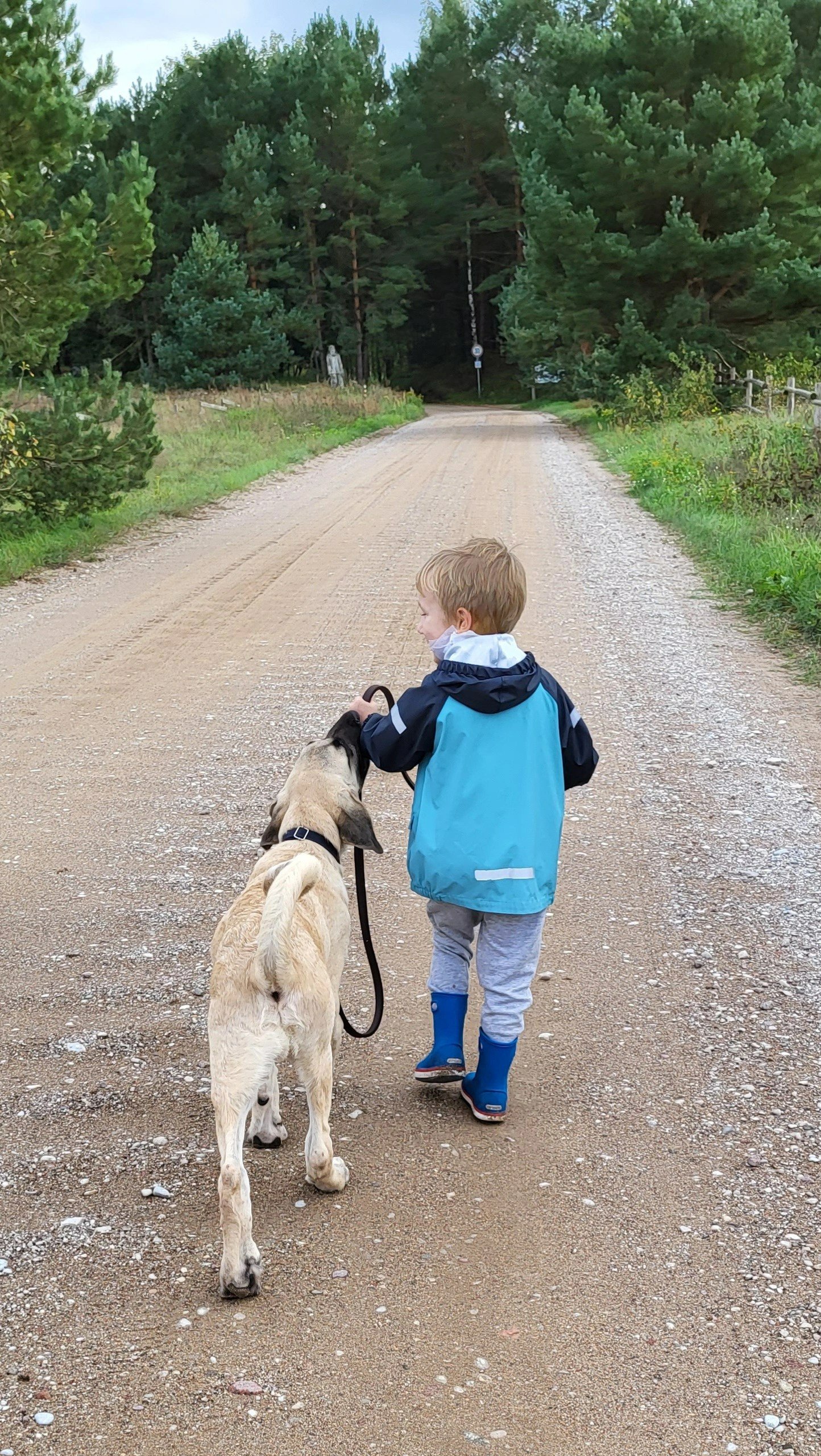
- Life (being able to live to the end of a life of normal length; not dying prematurely): Nature nurtures a fundamental appreciation for life, connecting children with the living world and fostering a vibrant sense of being.
- Bodily health (being able to have good health): Engaging in physical activities in natural settings boosts health, encourages active lifestyles, and contributes to disease prevention (e.g., reducing asthma rates), vitamin D production, and maintaining a healthy weight.
- Bodily integrity (being able to move freely from place to place): Nature offers spaces for children to explore freely, learning about risk-taking and personal boundaries within safe environments, enhancing mobility and physical autonomy.
- Senses, imagination, and thought (being able to use the senses, to imagine, think, and reason – and to do these things in a “truly human” way): The sensory-rich environments of nature stimulate creativity and cognitive development, encouraging imaginative play and focused learning.
- Emotions (having the ability for attachments to things and people outside ourselves; experiencing love, grief, gratitude, and justified anger): Nature’s calming presence aids in emotional development, providing a serene backdrop for the formation of deep emotional attachments and the healthy expression of feelings.
- Practical reason (being able to form a conception of the good and to engage in critical reflection about the planning of one’s life): Encounters with natural challenges foster problem-solving skills and ethical reasoning, empowering children to reflect on their actions and the world around them.
- Affiliation (being able to live with and show concern for other human beings, to engage in various forms of social interaction): Shared outdoor experiences build social skills and a sense of community, promoting empathy, cooperation, and mutual respect among children.
- Other species (being able to live with concern for and about animals, plants, and the world of nature): Direct experiences with flora and fauna cultivate a sense of connection and responsibility toward other species, fostering environmental stewardship.
- Play (being able to laugh, play, and enjoy recreational activities): Unstructured play in natural settings is essential for joy, creativity, and social interaction, offering children the freedom to express themselves and explore.
- Control over one’s environment (being able to participate effectively in political choices that govern one’s life; having the right of political participation, protections of free speech and association): By interacting with and influencing their natural surroundings, children learn about agency, impact, and the importance of caring for their environment, laying the groundwork for future civic engagement and environmental advocacy.
Nature’s profound impact on the development of these “Central Capabilities” underscores the need for accessible natural environments in children’s lives. By fostering these capabilities, nature plays a crucial role in supporting children’s holistic development, preparing them to lead fulfilling lives and contribute positively to society. Integrating natural elements across various scales—from home and educational settings to community and urban planning—ensures that children have the opportunities to develop these essential capabilities, contributing to their comprehensive growth and well-being.
Guiding Principles for Nature Therapy Activities for Children and Families
Nature therapy, rooted in the profound understanding that nature possesses immense healing potential, serves as a transformative approach to nurturing children’s holistic development. Nature therapy offers a unique opportunity to cultivate reciprocal relationships with nature, founded on an understanding of and responsiveness to nature’s needs. By engaging with the natural world, children not only experience healing but also develop a profound sense of care and stewardship for the environment, fostering a deep connection that enriches both their individual growth and the well-being of the planet. Nature is not just a passive setting but an active participant in the communication process with nature. Parents should strive to cultivate healthy, reciprocal relationships with nature, emphasizing mutual respect and appreciation. Avoiding the mindset of “using” nature for personal gain fosters a deeper connection and sense of stewardship towards the environment.
Parents must learn and educate themselves and their children on the following topics to organize appropriate nature therapy activities aligned with Nature’s needs:
- Indigenous awareness: Parents should prioritize learning about the indigenous homeland they reside in, acknowledging the history, culture, and issues of the indigenous people. Supporting local and indigenous businesses or finding other ways to demonstrate support can foster a deeper connection to the land and people.
- Climate change and sustainability: Families should educate themselves on climate change and sustainability practices to reduce their environmental footprint. Addressing feelings of eco-anxiety, eco-grief, and environmental depression signs in both parents and children is vital. It’s important to explore healthy ways to process these emotions and adopt habits that promote care for nature and biodiversity preservation.
- Regular nature connection: Allocating regular time for both parents and children to immerse themselves in nature is essential. Providing opportunities for outdoor play and free physical activity allows children to develop a profound connection with the natural world. While ensuring reasonable safety measures, parents should also recognize that exposure to reasonable risk is crucial for children’s development.
- Leading by example: Parents serve as primary role models for their children. By educating themselves about ecotherapy principles and actively engaging in nature-based activities, parents can demonstrate the importance of environmental stewardship and holistic well-being, setting a positive example for their children to follow.
- Finding balance between risk and safety: In our journey to foster children’s development through nature, it’s essential to strike a balance between safety and risk. While ensuring a safe environment is paramount, exposing children to manageable risks is crucial for their growth and development. Encouraging exploration and calculated risk-taking helps children build resilience, problem-solving skills, and confidence.
- Practicing mindfulness and presence: Encouraging children and parents to practice mindfulness while engaging with nature can enhance their connection to the environment and promote overall well-being. Being present in the moment allows individuals to fully experience the sights, sounds, and sensations of nature, fostering a deeper sense of connection and appreciation.
- Unplugging from technology: Emphasizing the importance of unplugging from technology during connection with nature activities could further enhance the experience and foster deeper connections with the natural world. Limiting screen time and distractions allows families to fully immerse themselves in nature and reap its therapeutic benefits.
Tips for Incorporating Nature into Children’s Lives
As the seasons change and the weather warms, it’s the perfect time to step outside and explore the wonders of spring with your children. The calendar below is designed to inspire and guide you through a variety of nature-based activities that will spark curiosity, creativity, connection, and care for the natural world. Spring is a time of renewal and growth, and what better way to celebrate than by immersing yourselves in outdoor adventures, creative projects, and environmental stewardship? Whether you’re planting a garden, going on a nature hike, or creating art with natural materials, each activity offers opportunities for learning, bonding, and making cherished memories together as a family. The ultimate purpose of these activities is to help you and your children connect with nature, and the best way to do so is by showing it to your children through your example.
Instructions for parents
- Try a new activity every day: Explore a different activity each day or review the calendar in advance to choose activities that align with your family’s interests, schedule, and local environment. Schedule time when you can engage in nature-based activities without distractions, ensuring both you and your children are well-rested, fed, and ready to participate with enthusiasm.
- Gather supplies: Take note of any materials or equipment needed for each activity and gather them ahead of time to ensure a smooth and enjoyable experience.
- Be flexible: Be prepared to adapt plans based on weather and unforeseen circumstances. Stay flexible and open to adjusting activities as needed to accommodate changing conditions.
- Harmonize risk, safety, and sustainability: When engaging in nature-based activities, prioritizing safety and sustainability is essential to ensure the well-being of your family and the protection of the environment. However, it’s also important to remember that encountering reasonable risks and overcoming obstacles in nature are normal and beneficial aspects of growth for both you and your children. Embracing these challenges can foster resilience, problem-solving skills, and personal development, contributing to a well-rounded growth experience.
- Encourage exploration: Foster curiosity, observation, and a sense of wonder as your children engage with their surroundings. Be curious yourself, as your enthusiasm for an activity can inspire your children to participate wholeheartedly.
- Embrace learning moments: Use each activity as an opportunity to teach your children about the natural world, including plants, animals, ecosystems, and environmental conservation. Encourage questions, discussions, and reflections to deepen their understanding and appreciation of nature. Take the opportunity to learn something new yourself, enriching the experience for the whole family.
- Have fun: Above all, enjoy the time spent together as a family. Embrace the joy and wonder of springtime as you embark on these nature-based adventures with your children. Let go of distractions and fully immerse yourselves in the experience, creating cherished memories that will last a lifetime.
I warmly suggest that you take a moment to pause, breathe, and fully immerse yourselves in these nature-based activities with your children. Let go of the never-ending to-do lists and deadlines, and instead, prioritize this precious time together. It’s an opportunity to connect deeply with your children, to witness their curiosity and wonder as they explore the natural world. Embrace each moment with undivided attention, allowing yourselves to be fully present and engaged in the experience. Take this time to rejuvenate your spirits, to find solace and joy in the simple pleasures of nature. Let the worries and stresses of daily life melt away as you embark on this journey of discovery with your loved ones.
This calendar is designed to be a helpful companion on your adventure. You can easily print it out to have it on hand whenever you need it, making it convenient to reference the activities and plan your family outings. So, step outside, breathe in the fresh air, and let nature work its magic on your soul. Cherish these moments, for they are the ones that will stay with you and your children for a lifetime.
| Day 1: Discover signs of spring Take a family walk to observe spring’s arrival. Look for budding flowers, and new leaves, and listen for birds to return. Bring a camera or sketchbook to capture your finds. Discuss the seasonal changes and what spring means to each of you. This simple activity encourages appreciation for nature’s renewal. | Day 2: Spring star gazing Spend an evening exploring the stars and constellations of the spring sky. Use a star chart or app to identify different celestial bodies. It’s a peaceful way to connect with the universe and spark curiosity about astronomy. | Day 3: Spring nature bingo Engage in an interactive game of “Spring nature bingo”. Create bingo cards with signs of spring, such as a blooming flower or a butterfly. Explore outdoors to spot these signs and complete your bingo card, encouraging observation and exploration. | Day 4: Indoor seed planting Start your garden early by planting seeds indoors. This activity allows you to observe the miracle of growth from seed to sprout and beyond. It’s a wonderful way to teach children about the life cycle of plants, responsibility, and the rewards of nurturing life. | Day 5: DIY Bird feeders for conservation Craft DIY bird feeders from recycled materials as a family project. Hang them in your garden or a community space to support local bird populations. Discuss the importance of birds in ecosystems and how simple actions can aid in conservation efforts. | Day 6: Experience the symphony of nature Wake up early to experience the magic of the dawn chorus, where birds sing at the start of a new day. Find a comfortable spot outside and encourage each family member to close their eyes and focus on the different bird songs, discussing the varieties of birds and their calls afterward. This activity is a wonderful way to practice mindfulness and appreciation for nature’s simple pleasures. |
| Day 7: Flower and leaf pressing Collect various spring flowers and leaves on a nature walk. Use a flower press or heavy books to press and preserve them. These natural keepsakes can be used for art projects or to create a botanical journal, capturing the fleeting beauty of spring. | Day 8: Park cleanup Gather family and friends for a cleanup day at a local park or natural area. Equip yourselves with gloves and bags to collect litter. It’s a practical way to teach the value of environmental stewardship and community service, making a tangible difference in maintaining natural beauty and health. | Day 9: Splash into spring Celebrate the rainy season with a puddle-jumping contest. Find the biggest puddles and see who can make the biggest splash. It’s a fun way to enjoy the outdoors and embrace the spring showers. | Day 10: Paint rocks Gather smooth rocks from your backyard or a nearby park. Set up a painting station with acrylic paints, brushes, and water. Let creativity flow as you paint intricate designs, colorful patterns, or inspiring messages onto the rocks. Once dry, scatter them in your garden, along pathways, or gift them to friends and neighbors. This activity combines creativity with outdoor exploration, adding a touch of whimsy to your surroundings. | Day 11: First picnic of spring Pack a picnic basket with seasonal treats like fresh fruits, sandwiches, and salads. Find a scenic spot in nature, whether it’s a local park, beach, or backyard, and enjoy a leisurely meal together. Take time to appreciate the sights, sounds, and smells of spring while bonding over delicious food. | Day 12: Nature photography day Embark on a photography expedition to capture the wonders of the natural world. Explore a nearby park, forest, or botanical garden with your camera or smartphone. Encourage each family member to photograph their favorite scenes, from blooming flowers to majestic trees and curious wildlife. Afterward, gather to share and discuss your photos, appreciating the diversity and beauty of nature through photography. |
| Day 13: Discover local waterways Embark on an adventure to discover local waterways, such as rivers, streams, or ponds. Pack a picnic and explore the banks, observing the wildlife and plant life that thrive in these habitats. Consider bringing along a field guide to identify any birds or fish you encounter. This activity fosters appreciation for local ecosystems and provides opportunities for outdoor recreation and relaxation. | Day 14: Study earthworms Spend the day studying earthworms and their vital role in soil health. Head to your garden or a nearby green space with a shovel and magnifying glass. Dig carefully to observe earthworms in their natural habitat, noting their behavior and anatomy. Discuss how earthworms contribute to soil fertility and ecosystem health. This hands-on activity fosters curiosity about the natural world and appreciation for the small creatures beneath our feet. | Day 15: Create nature art Gather leaves, flowers, twigs, and other natural materials from your surroundings. Use them to create beautiful nature-inspired artwork, such as collages, mandalas, or sculptures. Let your imagination run wild as you arrange and glue the materials onto paper, canvas, or other surfaces. This hands-on activity encourages creativity, connection with nature, and appreciation for the beauty of the natural world. | Day 16: Blossom tree observation Take a stroll through your neighborhood or a nearby park to observe blossoming trees in full bloom. Bring along a notebook or sketchpad to jot down your observations or sketch the different types of blossoms you encounter. Take time to admire the colors, shapes, and scents of the flowers, and discuss the significance of blossoms in heralding the arrival of spring. This activity fosters an appreciation of nature and the changing seasons. | Day 17: Start a nature journal Start a nature journal to document your observations, experiences, and reflections in the natural world. Choose a notebook or sketchbook and personalize it with drawings, quotes, or pressed flowers. Take it with you on outdoor adventures and use it to record sightings of plants, animals, weather patterns, and more. This activity cultivates mindfulness, creativity, and a deeper connection with nature. | Day 18: Botanical garden visit Embark on a captivating journey through a local botanical garden. Wander along winding paths lined with vibrant flowers, towering trees, and exotic plants from around the world. Take time to admire the intricate beauty of each botanical specimen, and engage in guided tours or educational exhibits to learn more about plant diversity and conservation efforts. This enriching experience offers opportunities for relaxation, inspiration, and the discovery of nature. |
| Day 19: Muddy masterpieces Use mud to create art on paper or sidewalks, experimenting with different textures and patterns. This activity encourages creativity and a hands-on connection with the earth, turning a simple element into expressive artwork. | Day 20: Recycled garden containers Transform recycled containers into vibrant garden pots. Plant herbs, flowers, or small vegetables. It’s a creative way to reuse, reduce waste, and introduce greenery into your space. | Day 21: Mini wildlife refuge Build a mini refuge with birdhouses, bat boxes, and insect hotels. Plant native greenery to offer food and shelter. This activity teaches the importance of conservation and provides a safe haven for wildlife. | Day 22: Vernal equinox celebration Celebrate the vernal equinox, the official start of spring, with a day of nature activities. Begin with a sunrise viewing to welcome longer days ahead. Create nature-themed crafts, such as sun catchers or flower wreaths, to decorate your home. Conclude with an evening picnic under the stars, reflecting on the balance of day and night. This celebration connects the family with the cyclical nature of the seasons and the renewal spring brings. | Day 23: Seed bomb making Create seed bombs with native flower seeds and biodegradable materials. Scatter them in community spaces or neglected areas to support local ecosystems. This hands-on activity blends gardening with conservation, highlighting the importance of native plants and biodiversity. | Day 24: Wind chime creation Design and assemble wind chimes using materials like beads, shells, and recycled metals. Hang them outdoors to enjoy their soothing sounds with every breeze, blending artistry with the natural music of the wind. |
| Day 25: Scavenger hunt for natural treasures Organize a scavenger hunt in a nearby park, seaside, or woodland, looking for specific natural items like a certain type of leaf, stone, feather, or shell. This adventure encourages exploration, observation, and learning about the diversity of the natural environment around you. | Day 26: Explore a new nature trail Discover a nature trail or path you’ve never visited before. Observe the unique flora and fauna, and enjoy the fresh perspectives it offers. This journey emphasizes exploration and the endless variety of nature’s beauty. | Day 27: Practice outdoor yoga Find a peaceful outdoor setting for a family yoga session. Focus on poses that mimic nature, like trees or mountains, to connect physically and spiritually with the surrounding environment. It’s a calming way to enhance well-being and appreciate the outdoors. | Day 28: Learn about spring pollinators Dive into the world of bees, butterflies, and other spring pollinators. Visit a local garden or park to observe them in action, or create a DIY pollinator habitat. Discuss their crucial role in ecosystems and how plants and animals depend on each other. | Day 29: Observe a spring sunset End the day by watching a spring sunset from a favorite outdoor spot. Reflect on the changing colors and the calmness it brings. It’s a moment to appreciate the day’s end and the beauty of nature’s cycles. | Day 30: Tree planting day Dedicate the day to planting a tree in your yard or a community space. Discuss the importance of trees for the environment, including air purification and habitat provision. It’s a hands-on way to contribute to Earth’s well-being and leave a lasting legacy. |
Additional resources
For further learning, consider exploring these resources.
Scientific research:
- Access a vast amount of scientific research on how connection to nature can promote healthy development in children. https://research.childrenandnature.org/
Books:
- “Last Child in the Woods: Saving Our Children from Nature Deficit Disorder” by Richard Louv: This book, authored by Richard Louv and published in 2005, delves into the concept of nature-deficit disorder and the importance of reconnecting children with the natural world. It offers insights and solutions for addressing the challenges of disconnecting from nature in modern society. https://www.amazon.com/Last-Child-Woods-Children-Nature-Deficit-dp-156512605X/dp/156512605X/ref=dp_ob_image_bk
- “The Nature Principle: Reconnecting with Life in a Virtual Age” by Richard Louv: Another insightful book by Richard Louv, this work explores the concept of the “nature principle” and advocates for a deeper connection to the natural world in both personal and societal contexts. Louv discusses how nature can enrich our lives and offers practical strategies for incorporating more nature into daily routines. https://www.amazon.com/Nature-Principle-Reconnecting-Life-Virtual/dp/161620141X
- “How to Raise a Wild Child: The Art and Science of Falling in Love with Nature” by Scott D. Sampson: In this book, Scott Sampson, a paleontologist and nature educator, shares strategies for fostering a love of nature in children. Drawing on research and personal experience, Sampson provides practical advice for parents and educators on how to encourage outdoor exploration, curiosity, and environmental stewardship in children. https://www.amazon.com/How-Raise-Wild-Child-Science/dp/0544705297
- “Balanced and Barefoot: How Unrestricted Outdoor Play Makes for Strong, Confident, and Capable Children” by Angela J. Hanscom: Angela Hanscom, a pediatric occupational therapist, explores the importance of outdoor play and its impact on children’s physical, emotional, and cognitive development. Through case studies and research, Hanscom highlights the benefits of unstructured outdoor play and offers insights into creating environments that support children’s natural development. https://www.newharbinger.com/9781626253735/balanced-and-barefoot/
TED talks:
- What Nature Teaches Children | Nilda Cosco | TEDxRaleigh. Nilda Cosco emphasizes the inherent educational value of nature for children, discussing how natural environments stimulate learning and development in unique and profound ways. Watch on YouTube: Watch Here
- How to Raise a Wild Child | Scott Sampson | TEDxLangleyED. Scott Sampson shares insights on encouraging children to develop a deep, meaningful connection with the outdoors, advocating for the importance of nurturing their sense of wonder and exploration. Watch on YouTube: Watch Here
- Saving Our Children from Nature Deficit Disorder | Becci Curry | TEDxEustis. Becci Curry addresses the concept of Nature Deficit Disorder, outlining its impacts on child development and offering solutions to reintegrate nature into children’s lives. Watch on YouTube: Watch Here
- Learning with Nature: Inspiring the Next Systems-Thinkers | Jamie Byron | TEDxWalthamED. Jamie Byron discusses how nature can inspire systems thinking in children, preparing them to tackle complex global challenges with a holistic perspective. Watch on YouTube: Watch Here
- Retelling the Story of Humans and Nature | Damon Gameau | TEDxSydney. Damon Gameau explores the relationship between humans and nature, advocating for a narrative that emphasizes coexistence and mutual respect to foster environmental stewardship. Watch on YouTube: Watch Here
Documentaries/Films:
- “Nature Play: Take Childhood Back”: This documentary explores the importance of outdoor play and nature-based learning in childhood, showcasing the benefits of unstructured play in natural environments. https://www.natureplayfilm.com/
- “Project Wild Thing”: This documentary follows filmmaker David Bond as he attempts to reconnect children with nature in an increasingly digital world. It explores the challenges of “nature deficit disorder” and the importance of outdoor experiences for children’s health and development. https://www.youtube.com/watch?v=mE1ADmtq7dQ
- “The Land”: This short documentary takes viewers to a unique playground in Wales where children are given the freedom to play and explore in an environment with minimal adult supervision. It offers insights into the benefits of risk-taking and unstructured play in natural settings. https://www.youtube.com/watch?v=vHKrH51ygok
Websites:
- The Nature Conservancy – Nature Works Everywhere. Offers interactive tools, videos, and lesson plans designed to educate children about the importance of nature and conservation. Visit the website: Nature Works Everywhere
- Children & Nature Network. Provides a rich collection of resources, research articles, and practical tips aimed at reconnecting children with nature. Visit the website: Children & Nature Network
References:
- Arola, Terhi & Aulake, Marianne & Ott, Anna & Lindholm, Matti & Kouvonen, Petra & Virtanen, Petri & Paloniemi, Riikka. (2022). The impacts of nature connectedness on children’s well-being: Systematic literature review. Journal of Environmental Psychology. 85. doi:101913. 10.1016/j.jenvp.2022.101913
- Burfield F. (2016). The benefits of children’s connections to nature. Royal Society for the Protection of Birds (RSPB). https://gulbenkian.pt/uk-branch/new-research-benefits-childrens-connections-nature/
- Chawla L. (2015). Benefits of Nature Contact for Children. Journal of Planning Literature, Vol. 30(4), 433-452. doi:10.1177/0885412215595441jpl.sagepub.com
- Children: improving survival and well-being. https://www.who.int/news-room/fact-sheets/detail/children-reducing-mortality
- COVID-19 pandemic triggers 25% increase in prevalence of anxiety and depression worldwide – https://www.who.int/news/item/02-03-2022-covid-19-pandemic-triggers-25-increase-in-prevalence-of-anxiety-and-depression-worldwide
- Fyfe-Johnson, A. L., Hazlehurst, M. F., Perrins, S. P., Bratman, G. N., Thomas, R., Garrett, K. A., Hafferty, K. R., Cullaz, T. M., Marcuse, E. K., & Tandon, P. S. (2021). Nature and Children’s Health: A Systematic Review. Pediatrics, 148(4), e2020049155. https://doi.org/10.1542/peds.2020-049155
- Griffin, G. M., Nieto, C., Senturia, K., Brown, M., Garrett, K., Nguyen, E., Glassy, D., Kroshus, E., & Tandon, P. (2024). Project nature: promoting outdoor physical activity in children via primary care. BMC primary care, 25(1), 68. https://doi.org/10.1186/s12875-024-02297-5
- Hazlehurst, M. F., Hajat, A., Tandon, P. S., Szpiro, A. A., Kaufman, J. D., Tylavsky, F. A., Hare, M. E., Sathyanarayana, S., Loftus, C. T., LeWinn, K. Z., Bush, N. R., & Karr, C. J. (2024). Associations of residential green space with internalizing and externalizing behavior in early childhood. Environmental health : a global access science source, 23(1), 17. https://doi.org/10.1186/s12940-024-01051-9
- Improving the mental and brain health of children and adolescents. https://www.who.int/activities/improving-the-mental-and-brain-health-of-children-and-adolescents
- Kuo M., Barnes M. and Jordan C. (2019). Do Experiences With Nature Promote Learning? Converging Evidence of a Cause-and-Effect Relationship. Front. Psychol. 10:305. DOI: 10.3389/fpsyg.2019.00305
- Lanza, Kevin & Alcazar, Melody & Chen, Baojiang & Kohl, Harold. (2022). Connection to nature is associated with social-emotional learning of children. Current Research in Ecological and Social Psychology. 4. 100083. 10.1016/j.cresp.2022.100083
- Louv, R. (2005). Last Child in the Woods: Saving Our Children from Nature-Deficit Disorder. Algonquin Books.
- Louv, R. & Charles, C. (2023). Trends and emerging ideas influencing the children and nature movement. The Children & Nature Network Founders’ Council.
- Tillmann S., Tobin D., Avison W., et al. (2018). Mental health benefits of interactions with nature in children and teenagers: a systematic review. Journal of Epidemiol Community Health 72, 958–966. doi:10.1136/jech-2018-210436
- Rogers, K. (2023). Biophilia hypothesis. Encyclopedia Britannica. https://www.britannica.com/science/biophilia-hypothesis





Leave a Reply